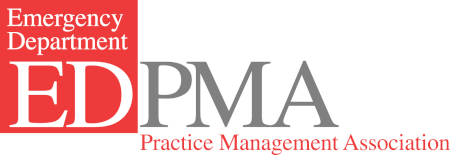
Quality, Coding & Documentation Committee (QCDC)
If you are joining/unjoining a community, please email info@edpma.org so we can forward Outlook... View more
EDPMA Comments on 2024 Measure Set Review Measures
-
EDPMA Comments on 2024 Measure Set Review Measures
Dear Partnership for Quality Measurement,
On behalf of the Emergency Department Practice Management Association (EDPMA), we are writing to provide feedback on the Partnership for Quality Measurement’s (PQM) 2024 Measure Set Review (MSR) list of measures under consideration for removal from Centers for Medicare & Medicaid Services (CMS) quality programs. EDPMA is the only professional physician trade association focused on the delivery of high-quality, cost-effective care in the emergency department. EDPMA’s membership includes emergency medicine physician groups of all ownership models and sizes, many of whom serve rural communities, as well as billing, coding, and other professional support organizations that assist healthcare providers in our nation’s emergency departments. Together, EDPMA’s members deliver (or directly support) health care for about half of the 146 million patients that visit U.S. emergency departments each year.
EDPMA appreciates that the annual MSR process aims to optimize the CMS measure portfolio by allowing interested stakeholders to consider the purpose of each program’s measures and to weigh the impact of these measures against the burden of implementation. At the same time, we are concerned about three measures currently under consideration for removal from the Merit-Based Incentive Payment System (MIPS), which are important to and commonly used by emergency department practices. These measures are discussed below.
#331: Adult Sinusitis: Antibiotic Prescribed for Acute Viral Sinusitis (Overuse)
This measure is under consideration for removal by the PQM due to questions surrounding actionability (i.e., do measured entities have a well-articulated path to improvement?) and/or questions about whether there is still an opportunity for impact.
We remind the PQM that this measure currently has a benchmark, which demonstrates that it is commonly reported by MIPS participants. Unlike many other measures in the MIPS inventory, #331 also does not have topped out performance according to the 2024 MIPS historic benchmarks, which suggests that gaps in performance still exist in terms of antibiotic prescribing for acute viral sinusitis. Additionally, CMS recently included this measure in the Adopting Best Practices and Promoting Patient Safety within Emergency Medicine MIPS Value Pathways (MVP). CMS has clearly stated its intent to eventually move all MIPS participants into MVPs and to retire traditional MIPS. With MVPs being CMS’ preferred future
participation pathway, it is important that CMS preserve this measure as an option for MVP reporting. Overall, this measure targets the important goal of ensuring appropriate use of antibiotics and based on existing benchmarks, it is clear there is still room for performance improvement.
#415: Emergency Medicine: Emergency Department Utilization of CT for Minor Blunt Head Trauma for Patients Aged 18 Years and Older
#416: Emergency Medicine: Emergency Department Utilization of CT for Minor Blunt Head Trauma for Patients Aged 2 Through 17 Years
These two measures are under consideration for removal by the PQM due to questions surrounding actionability and impact and/or because they are potentially duplicative and candidates for harmonization.
Similar to #331, measures #415 and #416 have historic performance benchmarks in 2024, indicating wide use among MIPS participants. While #415 is topped out, #416 is not topped out and continues to target an important and ongoing gap in performance. Both #415 and #416 are also included in the Emergency Medicine MVP, demonstrating that CMS continues to find value in these measures and envisions them playing an important role in the future of the program.
Emergency medicine practices face unique challenges when it comes to MIPS compliance. They manage a wide range of often unpredictable clinical scenarios and disparate patient populations. They also struggle with data capture due to a lack of control over the facility’s EHR system, which limits their reporting options and poses challenges in regard to QCDR participation. Overall, if CMS wants to incentivize movement towards MVPs, then it must ensure that a diverse set of quality measures are available so that practices of all sizes and levels of resource can take advantage of this new, more streamlined reporting pathway.
EDPMA appreciates the opportunity to provide feedback on these important measures. We recognize that measure performance data were not reviewed as part of this initial selection process, but that they will be reviewed as part of the MSR process. We look forward to reviewing and providing additional feedback on these assessments when available for public comment. In the meantime, should you have any questions, please do not hesitate to contact EDPMA Executive Director Cathey Wise at cathey.wise@edpma.org.
Sincerely,
Andrea Brault, MD, MMM, FACEP
Chair
Emergency Department Practice Management Association
Sorry, there were no replies found.
Log in to reply.
